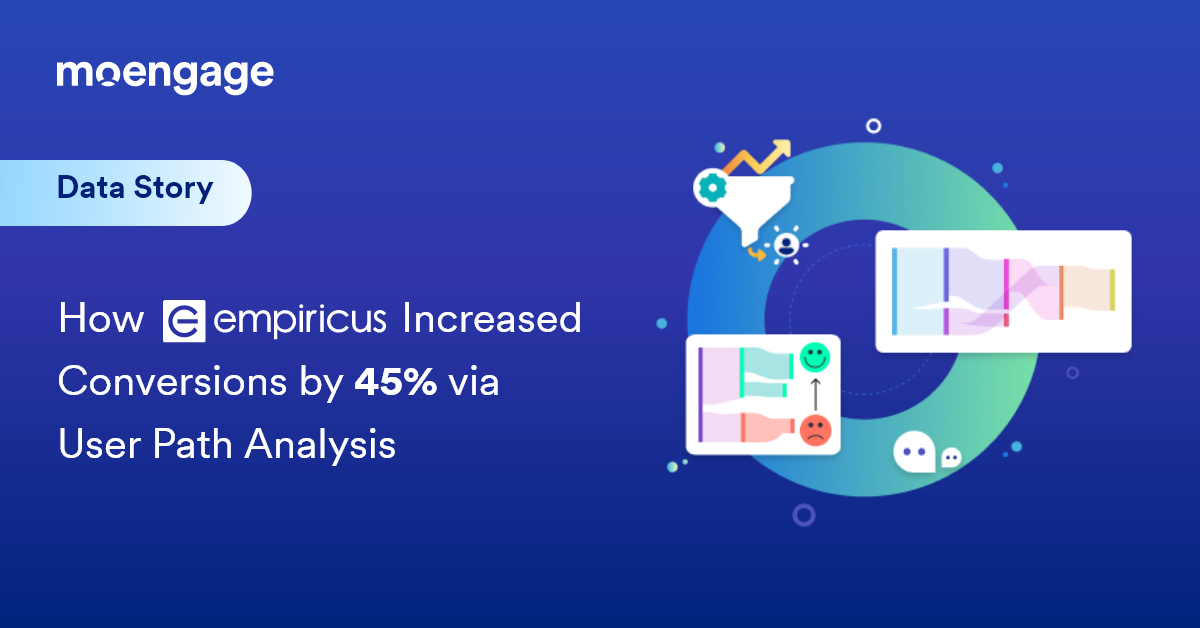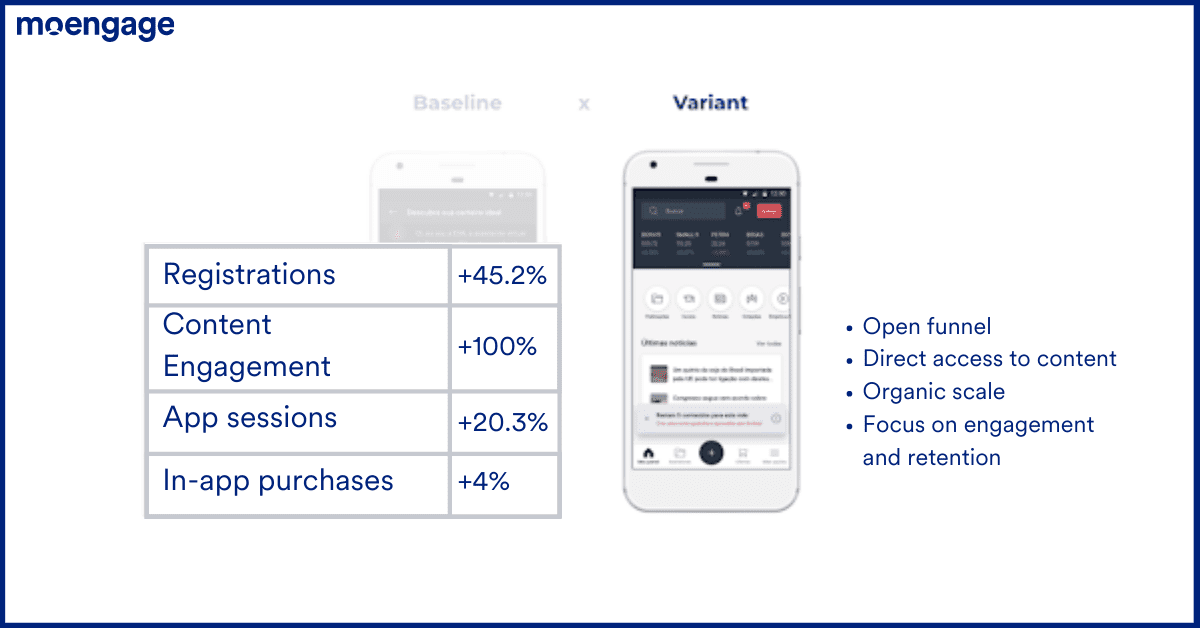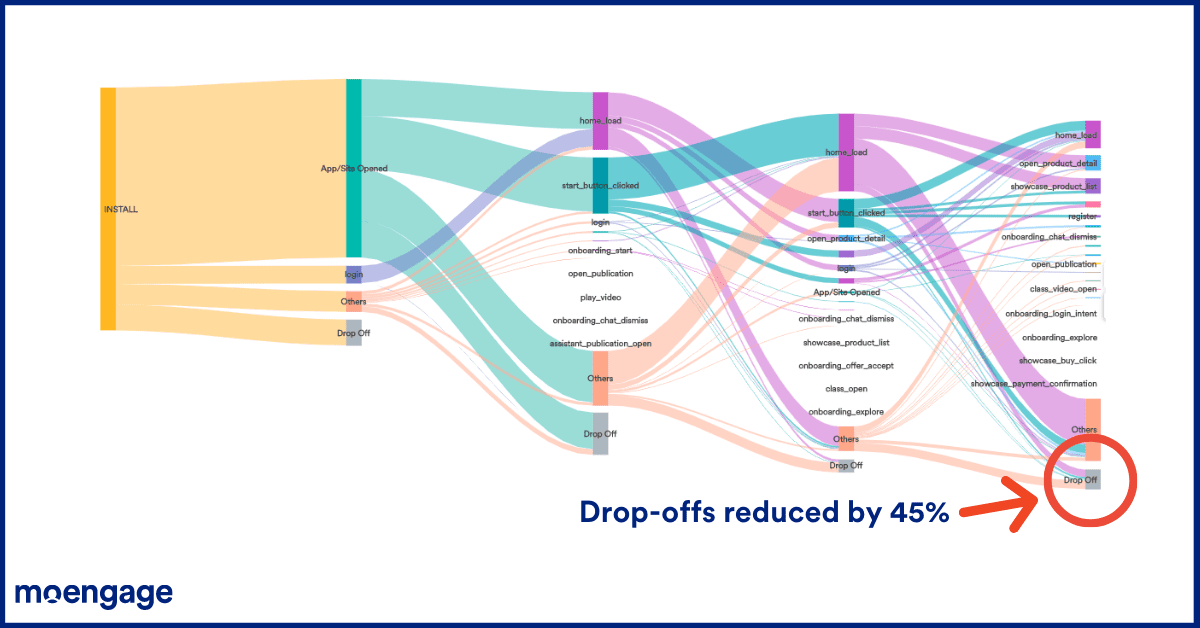How Empiricus Increased Conversions by 45% via User Path Analysis

Reading Time: 5 minutes
Bonus Content
|
For over a million Brazilians, the most reliable investment consultant isn’t a person—it’s an app. Founded by three entrepreneurs in 2009, Empiricus is the largest financial publisher in the country today. With close to 2 million readers and 400 thousand subscribers, the company aims to help retail investors have the same returns as a professional by delivering investment recommendations. The team of 30 analysts prides itself on providing information in language anyone can understand and put into practice easily.
This is the story of how the Brazilian financial publisher leveraged User Path Analysis to create a seamless onboarding experience for customers, increasing conversions by 45%.
The problem: Too many drop-offs after onboarding
Having established market leadership, the team decided to look inwards and try to optimize existing processes. To start with, they ran a user path analysis on MoEngage to investigate user behavior in the onboarding funnel. One problem stood out—there were too many drop-offs after the onboarding and engagement process.

In the current onboarding process, users interacted with a chatbot, which would then create an ‘investor profile’ and recommend the most relevant articles to them. If the users were interested, they could make a one-time payment and get access to all content.

From the user path analysis and customer feedback, Empiricus understood that this onboarding process wasn’t working well. It didn’t allow users to discover the benefits offered by the app early enough. Having to go through a complicated multi-step onboarding journey disincentivized users from engaging with the app.
The Solution: A frictionless onboarding process
A new onboarding process was proposed, which gave users direct access to content. Users who downloaded the app would be able to read up to 5 free articles, and anything more would require them to register.

To test out this hypothesis, the Empiricus team split 30,000 new users into two groups and set up an A/B test. One group would go through the old onboarding flow, and the other would see the new flow.

The results: A clear winner and increased conversions

Contrary to what they had assumed, Empiricus didn’t lose any purchasing power in the new onboarding process—in fact, purchases were up by 4 percent!
The other engagement metrics skyrocketed too—conversions increased by 45 percent, because users now had to sign up to access deeper functionality. Consequently, engagement doubled as well, and app sessions increased by up to 20 percent.
The results were clear, and there was only one winner. The new onboarding opened up the funnel and gave users direct access to the value offered by Empiricus, as opposed to the original onboarding path, which created a narrow funnel.
A user path analysis performed on the new onboarding journey confirmed this hypothesis:

Best practices for user engagement analysis
The team at Empiricus follows a four-step framework whenever faced with a problem, combining multiple levels of data analysis with user feedback to work out the best solution.

Some best practices followed by the team are to:
- Map each touchpoint on the user journey and convert this into an event. The only way to measure what people are doing on your app is to track each touchpoint and translate the most important ones into events.
- Perform daily/weekly status checks: There’s no use translating touchpoints into events if you’re not going to analyze them later. You have to constantly monitor data and draw up hypotheses, conclusions, and insights.
- Test one at a time: Separate all the variables you want to test, and test one thing at a time. Don’t try to test them all at once, because you won’t know what drove a particular result.
Conclusion
The word ‘Empiricus’, named after Sextus Empiricus, a Greek philosopher, means ‘to derive from observation and practice.’ True to their name, the Brazilian powerhouse takes an ‘empirical’ approach to everything they do, observing user data to put their findings into practice. Today, with a new onboarding process in place and increased conversions, they’re ready to tackle the next challenge.
Until recently, the marketer’s style of engagement has been to plan, execute, analyze, and course-correct. Thanks to technological advancements, you can now flip the order of operations to analyze, plan, execute, measure, and course-correct. Insights provided by customer engagement platforms such as MoEngage can highlight critical gaps in the user journey, like ‘which customers are at risk of churn?’, ‘are you sending too few messages or too many?,’ etc. Using these insights, you can build a strategy that removes the guesswork and helps you weed out what’s not working.







